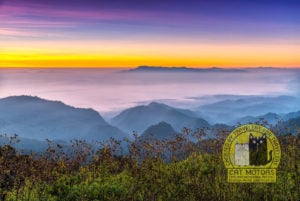Wat Phra Kaew – One of the most revered temples in Thailand 2026
The Kingdom of Thailand is renowned for its rich culture, history, and especially its magnificent temples, known as ‘Wats’. One such temple that holds a significant place in the heart of Thailand’s cultural heritage is Wat Phra Kaew, situated in the northern province of Chiang Rai. Often confused with the similarly named temple in Bangkok, which houses the famous Emerald Buddha, this temple is of equal importance, as it is believed to be the original site where the Emerald Buddha was found.
Chiang Rai’s Wat Phra Kaew is a must-visit site for travelers interested in Thai history, architecture, and Buddhism. It’s a serene place where one can take a peek into the Thailand of yesteryears, observe intricate art forms, and understand the country’s deep-rooted religious practices.
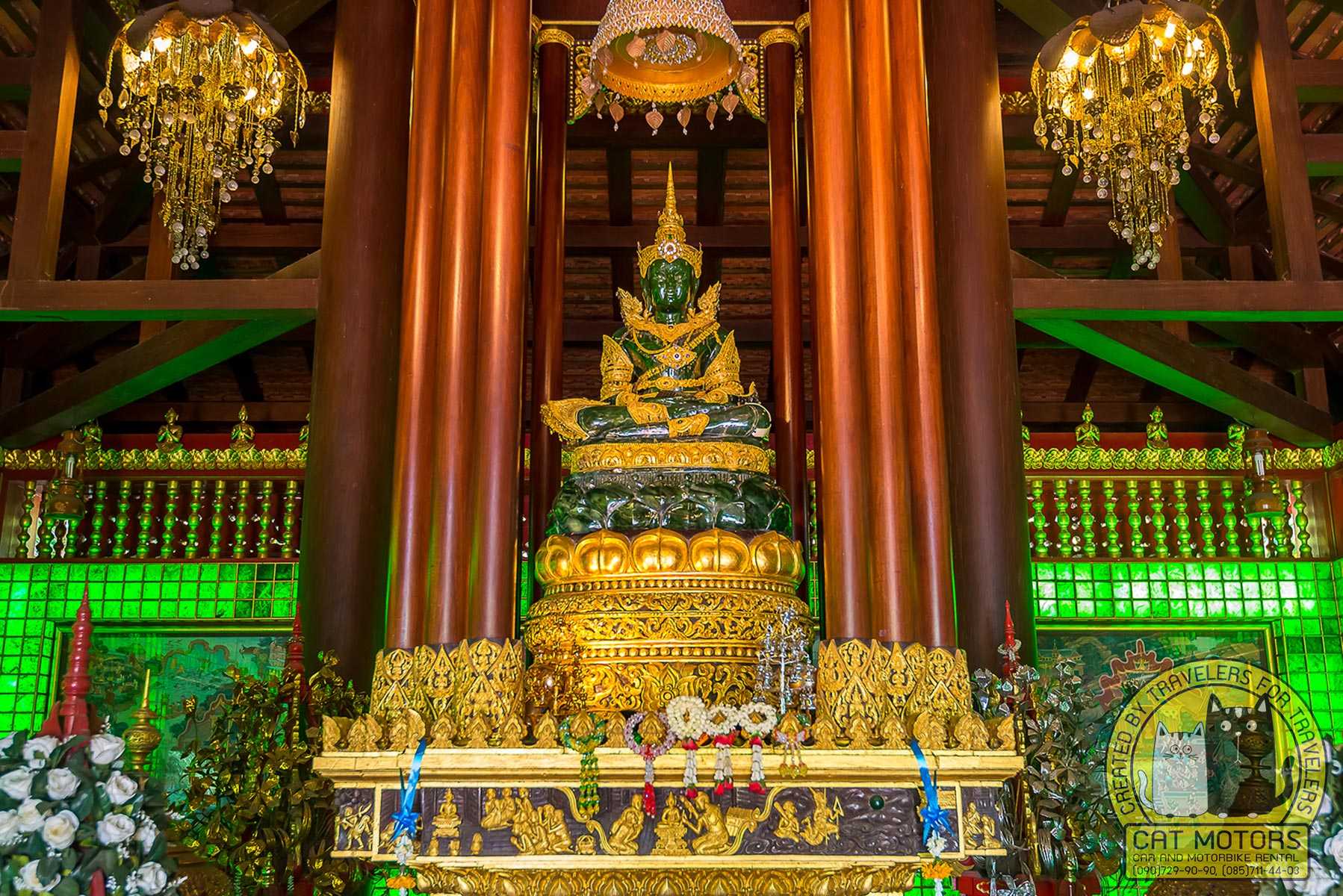
History of Wat Phra Kaew
The origin story of Wat Phra Kaew is steeped in fascinating folklore. The temple, established in the 14th century, was originally known as ‘Wat Pa Yia’ or ‘Bamboo Forest Monastery’. In 1434, after a lightning strike cracked open the temple’s chedi (a type of Buddhist stupa), the precious Emerald Buddha, made of jadeite, was discovered within its chamber. This event significantly heightened the temple’s importance.
The Emerald Buddha remained in Chiang Rai until 1436, when it was moved to Lampang, and later to Chiang Mai. The statue eventually ended up in the Temple of the Emerald Buddha, known as Wat Phra Kaew, in Bangkok, where it is currently housed. Chiang Rai’s Wat Phra Kaew is still revered as the original location of this holy artifact, adding to its historical significance.
Architecture and Art of Wat Phra Kaew
The architecture of Wat Phra Kaew reflects the traditional Thai style, characterized by layered roofs, rich decorations, and the integration of nature within the temple compound. The temple consists of several structures, including the viharn (assembly hall), the chedi, and an elegant Ubosot (ordination hall).
The Ubosot features stunning mural art that depicts the life of Buddha and scenes from Thai folklore. It is also home to a life-sized replica of the Emerald Buddha, reminding visitors of its historic connection to the original statue. The temple compound also features an enchanting garden dotted with Bodhi trees, Buddhist sculptures, and religious monuments, contributing to the site’s serene ambiance.
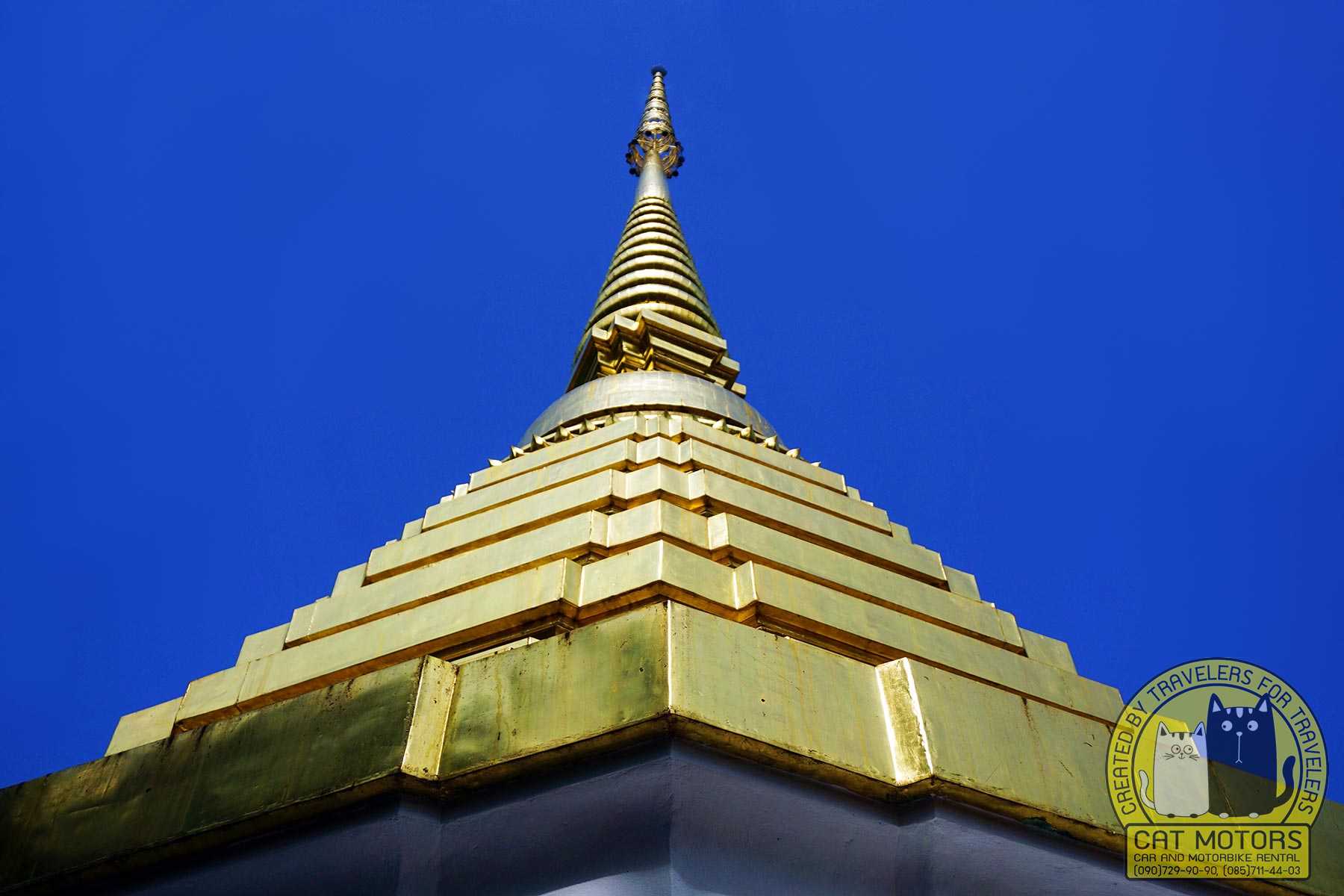
In 1434, a bolt of lightning struck and collapsed a part of the chedi, revealing the Emerald Buddha hidden within. The image was then moved to various cities as Lampang, Chiang Mai, Luang Prabang, Vientiane, Thon Buri, and eventually Bangkok, in that order. The Fine Arts Department of Thailand registered the old Phra Chedi as an important archaeological site of Thailand in 1935.
Wat Phra Kaew and the Emerald Buddha
The Emerald Buddha, despite its name, is made of green jadeite. It is considered the palladium of Thailand, a symbol of the country’s sovereignty and spiritual heart. Though the statue now resides in Bangkok, a replica in Chiang Rai’s Wat Phra Kaew commemorates the site’s historical connection to the Emerald Buddha.
The temple’s status as the original home of the Emerald Buddha bestows a great deal of religious significance. The presence of the replica in the same location where the original was found over 500 years ago amplifies the temple’s spiritual energy and cultural importance.
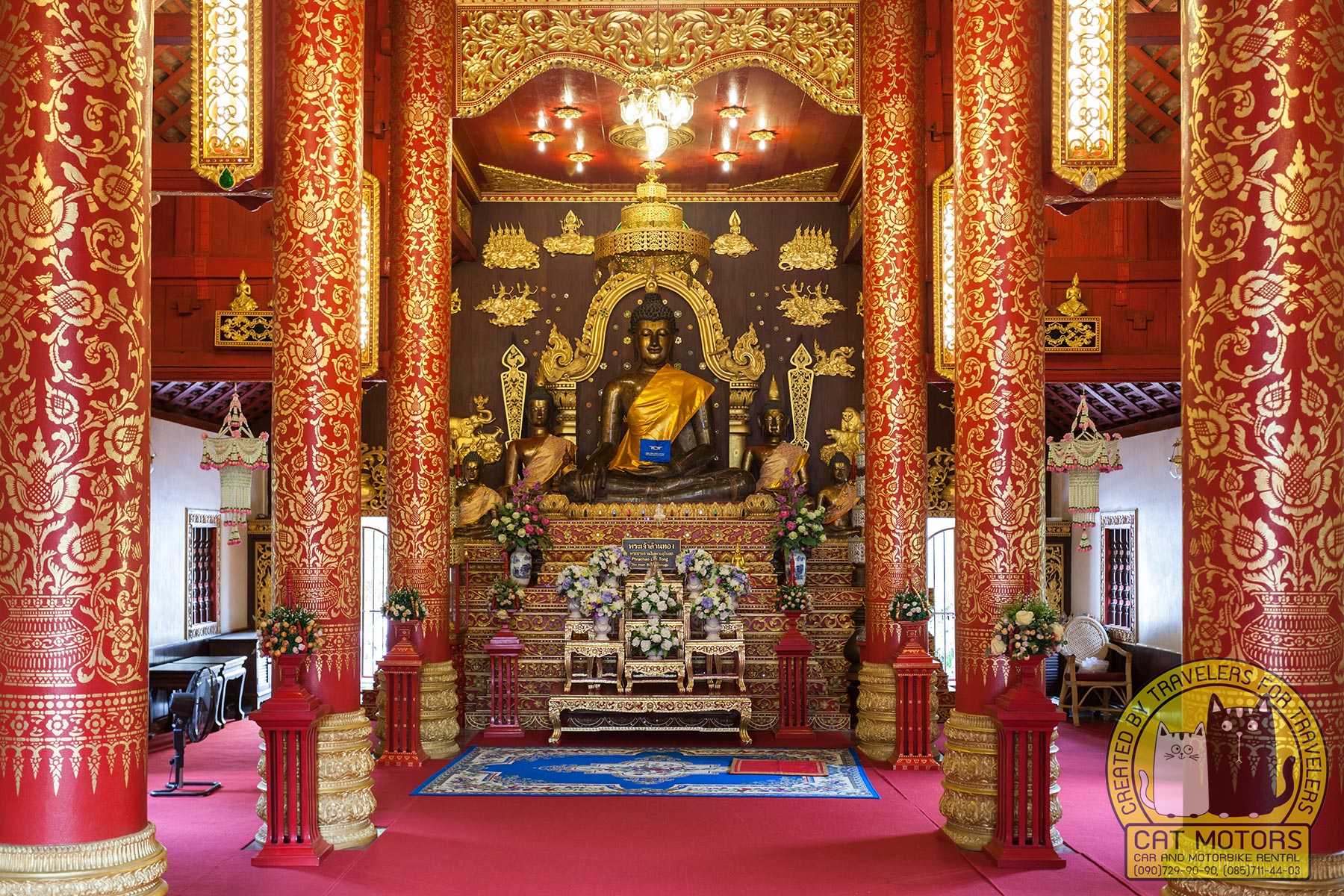
The Ubosot has a Chiang Saen style with a low foundation and steep-angle roof. It was constructed in 1890 and was granted a Wisukhamsima on April 6th, 1952. The main Buddha image in the Ubosot (Phra Jao Lan Thong) is brass and has a Maravijaya attitude. It is considered one of Thailand’s largest and most beautiful Pala images.
The Replica of the Emerald Buddha
Upon entering Wat Phra Kaew, the first sight to captivate visitors is the majestic replica of the Emerald Buddha. Made from Canadian jade and standing at a height of 30 inches, the statue is positioned at the back of the main hall. The figure holds a striking pose, seated cross-legged in a style known as the “Subduing Mara” (or vanquishing devil) posture, which is commonly used to depict the moment of Buddha’s enlightenment.
The replica of the Emerald Buddha is not just a mere copy of the original. The jade figure, cloaked in golden robes, emanates a unique sense of tranquility and a profound spiritual vibe that commands reverence. It’s not uncommon to see both locals and tourists spending time in quiet contemplation before the statue.
The Museum of Art
Another notable aspect of Wat Phra Kaew is the Museum of Art, situated within the temple premises. This museum houses a collection of artifacts, ancient scriptures, and rare Buddhist amulets. It also showcases an array of historical photographs, providing a fascinating glimpse into Thailand’s past.
In the museum, one can witness the skillful Thai craftsmanship in several wood carvings, textiles, and pottery artifacts. These pieces are not just exhibits but narratives of Thailand’s cultural journey through time. Make sure to allocate time for a visit to the museum during your trip to the temple, as it provides valuable context to the spiritual significance of the site.
The Surrounding Garden
Enclosed within the temple complex is a beautiful, well-maintained garden that offers a peaceful retreat. Traditional Thai plants, colorful flowers, and a variety of sculptures create a serene atmosphere, providing a sense of tranquility away from the hustle of Chiang Rai’s city center.
One can stroll through the garden, observing the variety of flora or simply sitting on a bench, soaking in the peaceful ambiance. Be sure to admire the intricate Buddhist sculptures scattered throughout the garden, each of them carrying a story from Buddhist lore.
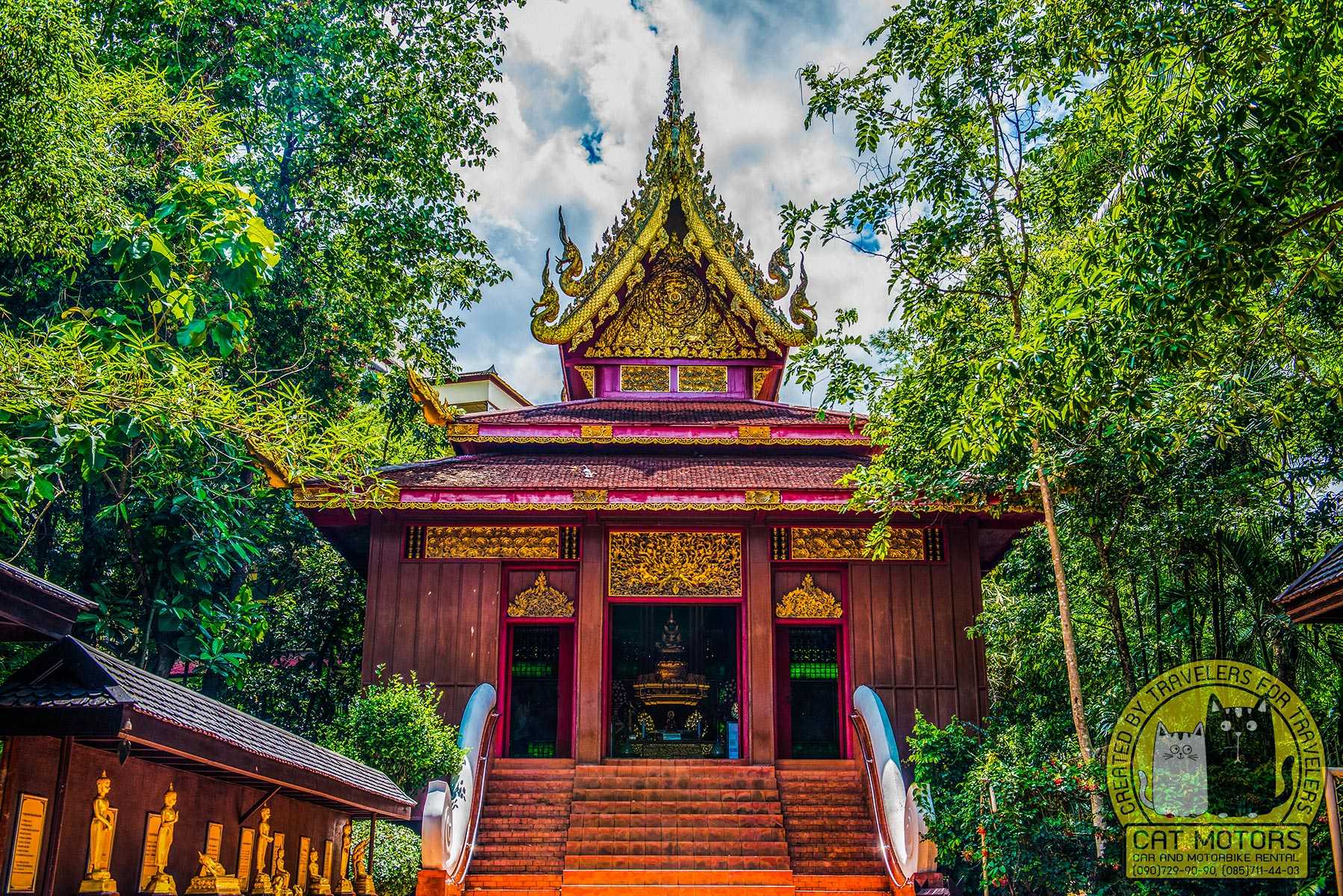
An ancient Lanna-style building. It is the resting place of Phra Buddha Ratnakorn Navuti Wassanusornmongkhol or Phra Yok Chiang Rai. The walls of the building are decorated with murals detailing the tales from the legend of the Emerald Buddha, the temple’s construction, and the dedication ceremony to the temple on October 19th, 1991.
Visiting Wat Phra Kaew
Situated in the heart of Chiang Rai, Wat Phra Kaew is easily accessible to visitors. The temple is open from 8 AM to 5 PM daily, and admission is free, although donations are appreciated. As with any religious site in Thailand, appropriate attire is necessary—shoulders and knees should be covered out of respect for local customs.
Visitors to the temple will experience a tranquil atmosphere, unlike the often crowded temples of Bangkok. This allows for a more leisurely exploration of the temple grounds. Don’t miss the opportunity to admire the detailed mural art and sit for a moment of quiet reflection under the shade of the temple’s lush garden.
Wat Phra Kaew’s Role in the Community
Wat Phra Kaew is not merely a tourist attraction—it’s a living piece of Thai culture. It plays a vital role in the community, serving as a center for religious ceremonies and festivals. One of the most significant events is the Songkran festival or Thai New Year, during which the temple becomes a hub of activity.
Moreover, the temple supports community life through its educational and social initiatives, including teaching Buddhist scripture, meditation classes, and cultural preservation activities. The temple’s monks also engage in daily routines such as alms-giving, which local people and visitors alike can observe or participate in.
Practical Information for Travelers
For first-time visitors, a few practical tips can enhance the experience at Wat Phra Kaew. As it’s a sacred site, visitors should dress modestly, covering shoulders and knees. It’s also respectful to remove shoes before entering any of the temple buildings.
Keep in mind that, while the temple is usually quiet and less crowded, it can get busy during Thai Buddhist festivals. Plan your visit accordingly if you prefer a serene environment. English signage throughout the temple premises will guide your exploration.
The temple does not have any official entry fee, but donations are accepted and contribute to the temple’s maintenance and ongoing restoration efforts. It’s a small way for visitors to show appreciation and contribute to preserving this historic site.
Beyond the Temple
The area surrounding Wat Phra Kaew is as captivating as the temple itself. Nestled in the heart of Chiang Rai, the temple is within proximity to the famous Clock Tower and the bustling Night Bazaar, offering a lively experience of local food, shopping, and entertainment.
Several restaurants and street food stalls offer a plethora of Thai delicacies, allowing you to satiate your palate after your visit to the temple. The night bazaar also features local artisans and their crafts, providing an opportunity to pick up a unique souvenir or gift.
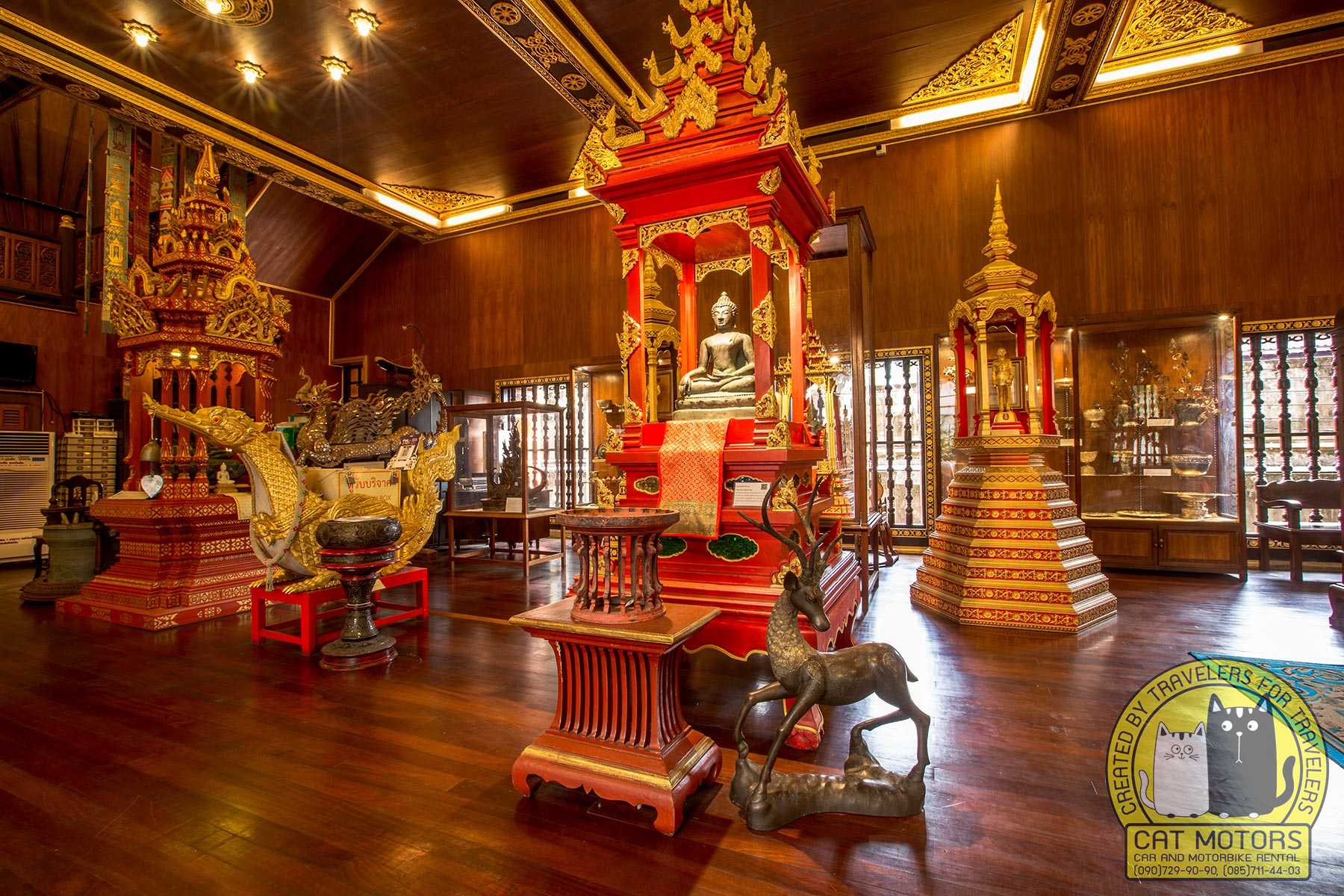
Final Thoughts
A trip to Wat Phra Kaew is a journey through the cultural and historical tapestry of Thailand. As you explore the temple’s sacred halls, admire its exquisite architecture, and discover the legend of the Emerald Buddha, you’ll gain a deeper understanding of Thailand’s spiritual heritage and its people’s devotion to Buddhism.
Whether you are a history enthusiast, a culture aficionado, or a spiritual seeker, Wat Phra Kaew offers an enriching experience that goes beyond a traditional travel itinerary. It invites you to pause, observe, and immerse yourself in a tale that spans centuries and lies at the heart of Thai identity.
Appendix: Further Reading and Resources
For those interested in diving deeper into the history and cultural significance of Wat Phra Kaew and Thai Buddhism, there are numerous resources available. Books such as “A History of Thailand” by Chris Baker and Pasuk Phongpaichit offer an in-depth overview of Thai history and culture. Online sources like the Tourism Authority of Thailand also provide up-to-date information about visiting the temple.
Map & Direction
YT Review
Wat Phra Kaew, Chiang Rai
Temple Walking Tour
FAQ
Wat Phra Kaew is important for its history and spiritual significance. It is considered a sacred pilgrimage site for many Buddhists. It is also a symbol of Chiang Rai and provides a sacred space of worship and meditation.
Wat Phra Kaew was known for its Emerald Buddha statue, which is said to be the oldest and most valuable Buddha statue in the world. It is also known for its intricate Lanna-style architecture and artwork, and is an important spiritual site for many people in Thailand.
Wat Phra Kaew is mainly used for religious ceremonies, such as ordinations, weddings, and merit-making. It is a popular site for pilgrimage, with many people coming to Chiang Rai to visit the temple.
The origin of Wat Phra Kaew dates back to 1434, when the statue of the Emerald Buddha was found in abandoned chedi.
Some of the highlights and features of Wat Phra Kaew include the Emerald Buddha statue; the Lanna-style architecture, including pagodas and viharns; the intricate carvings and artwork, and other objects related to Thai Buddhism.
Wat Phra Kaew is known as the Temple of the Emerald Buddha in English.
Entrance to Wat Phra Kaew is free, but you can make a donation or buy Buddhist amulets, thereby supporting the temple financially, to make repairs and restoration work in the future.
Working hours are from 8 a.m. to 6 p.m. Don’t forget to dress appropriately and neatly when visiting Buddhist temples.
Embark on an exciting journey through Northern Thailand with our comprehensive travel guides. They highlight the most scenic routes and local attractions. Start by visiting our big bike rental in Chiang Mai and review our terms and conditions for a smooth rental experience. With these resources, you can confidently explore mountain trails and charming villages.
Our travel advice sections offer essential tips on staying safe and enjoying your trip to the fullest. Discover the best times to visit popular attractions, participate in local festivals, and handle different road conditions. These tips will make your journey richer and more enjoyable. Join us in exploring the breathtaking landscapes and vibrant culture of Northern Thailand, ensuring a safe and memorable adventure.
- Author: Natcha Lindberg
- Updated: January 4, 2026
- No Comments



